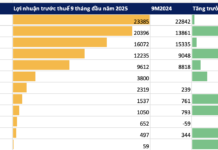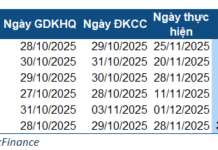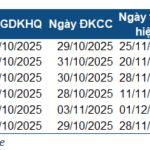
Samsung Tai Nguyen Electronics Park. Photo for illustration: Minh Duc/TTXVN
Incentives and support for the development of industrial clusters
Numerous incentives and support policies for the development of industrial clusters are outlined in Decree 32/2024/ND-CP issued by the Government on 15/3/2024.
The Decree stipulates investment incentives for: Industrial clusters located in areas with socio-economic difficulties; and investment in building the technical infrastructure of industrial clusters that belong to the industries and professions eligible for special investment incentives.
The application of incentives for investment projects in the construction of technical infrastructure for industrial clusters and investment projects in production and business activities within industrial clusters shall be implemented according to the規定 of land law, tax law, credit law, and other relevant legal規定.
In cases where different levels of incentives are stipulated by law, the highest level of incentives shall be applied.
The Decree stipulates that the local budget (including supplementary revenue with specific purposes from the central budget to the local budget) shall balance the support for investment and development of technical infrastructure systems both within and outside the industrial clusters in the locality (with priority given to supporting investment in environmental protection infrastructure projects for industrial clusters that have already been put into operation; supporting investment in essential shared infrastructure projects of industrial clusters located in areas with socio-economic difficulties, particularly difficult circumstances, industrial clusters developed in the orientation of industry and professional linkages, support, ecology, and preservation of traditional crafts) in accordance with the规定 of the Law on Public Investment and the Law on State Budget.
The State shall support no more than 30% of the total investment of the investment project for the construction of the technical infrastructure of industrial clusters.
The support fund shall not be included in the total investment of the project to calculate the lease price of land and the price of using infrastructure for investment projects within the industrial cluster.
The investor constructing the technical infrastructure of the industrial cluster shall be responsible for the management, repair, and regular operation of the supported technical infrastructure works to serve the common activities of the industrial cluster.
The People’s Committee of the province shall report to the People’s Council of the same level to decide or make decisions in accordance with its competence and the規定 of the law on the provision of support for investment in the construction of technical infrastructure for industrial clusters in the locality.
The Decree shall officially take effect from 1/5/2024.
Provisions on the level of loss and damage of rice and paddy in the national reserve
The Ministry of Finance has issued Circular No. 19/2024/TT-BTC dated March 22, 2024, providing for the technical and economic norms for the preservation of national reserve goods and the norms for the loss and damage of rice and paddy in the national reserve directly managed by the State Reserve Bureau.
According to the Circular, the loss and damage norms for rice stored in sealed conditions are as follows: Storage period less than 12 months: 0.050%; storage period from 12 to 18 months: 0.058%; storage period over 18 months: 0.066%.
The loss and damage norms for loose-stored paddy and bagged paddy in low-pressure conditions are as follows:
– Storage period from 1 to 3 months: 0.3%
– Storage period from 3 to 6 months: 0.5%
– Storage period from 6 to 9 months: 0.7%
– Storage period from 9 to 12 months: 0.9%
– Storage period from 12 to 18 months: 1.1%
– Storage period from 18 to 24 months: 1.3%
– Storage period from 24 to 30 months: 1.4%
– Storage period over 30 months: add/month: 0.015%
– Loss and damage norms for loose-stored paddy and bagged paddy stored in sealed conditions with supplementary nitrogen gas maintaining a concentration of ≥ 98% are as follows:
– Storage period from 1 to 3 months: 0.3%
– Storage period from 3 to 6 months: 0.5%
– Storage period from 6 to 9 months: 0.6%
– Storage period from 9 to 12 months: 0.7%
– Storage period from 12 to 18 months: 0.8%
– Storage period from 18 to 24 months: 0.9%
– Storage period from 24 to 30 months: 1%
– Storage period over 30 months: add/month: 0.015%
This Circular takes effect from 10/5/2024.
New regulations on the management of newly printed money series
The State Bank of Vietnam (SBV) has issued Circular 01/2024/TT-NHNN dated 29/3/2024 on the management of newly printed series of SBV banknotes.
This Circular stipulates the management of newly printed series of banknotes for different types of SBV banknotes starting from the assignment of series batches, the use of series batches in the process of printing banknotes, until the newly printed banknotes are issued into circulation.
The Circular specifies the principle of printing series during the printing process: For types of banknotes announced for issuance by SBV before 2003, the series consists of a series batch and a natural number sequence of 07 digits starting from 0000001; for types of banknotes announced for issuance by SBV from 2003 onwards, the series consists of a series batch and a natural number sequence of 08 digits, in which the two digits adjacent to the series batch are the last two digits of the year the banknote was produced, the next six digits are a natural number sequence starting from 000001 onwards; each banknote has its own separate series.
The principle of managing series during the printing process of printing and minting institutions:
The printing and minting institution shall print the series of banknotes in accordance with the principle mentioned above.
In case a printed banknote is found to be defective after the series printing stage, the printing and minting institution must use a replacement batch.
The principle of using a replacement batch shall be implemented in accordance with the regulations of the printing and minting institution;
the printing and minting institution shall organize the storage and management of information on the series of each type of banknote (including replacement batches) to ensure the accuracy and completeness of the information recorded on the seal, cover, and bundle of newly printed banknotes or packaging specified by SBV, including factors such as the printing and minting institution, the type of banknote, series batch, production year.
The Circular also stipulates the management of newly printed series during the process of handing over and receiving banknotes as follows:
The printing and minting institution shall deliver newly printed banknotes to SBV (Issuing and Treasury Department); hand over and receive newly printed banknotes between Central Treasury Departments; hand over and receive newly printed banknotes between the Central Treasury Department and the Transaction Office and SBV branches; hand over and receive newly printed banknotes between SBV branches.
The delivering party of newly printed banknotes must prepare a list of series of different types of banknotes in accordance with the规定 attached to the handover record or delivery note.
The receiving party shall be responsible for checking and comparing the content of the list with the actual handover; in case any errors are found, the receiving party must notify the delivering party to make adjustments, ensuring that it matches the actual handover.
When withdrawing newly printed banknotes from the Issuing Reserve Fund to the Issuing Business Fund at SBV branches and vice versa, the custodian of the delivering party shall prepare a list of series of different types of banknotes according to the规定.
The custodian of the receiving party shall be responsible for checking and comparing the content of the list with the actual handover; in case any errors are found, the receiving party must notify the delivering party to make adjustments, ensuring that it matches the actual handover.
The list of series shall be signed by the custodian of the delivering party and must accurately reflect the following factors: delivering party, receiving party, type of banknote, quantity, series batch, production year, code of the cover,





































